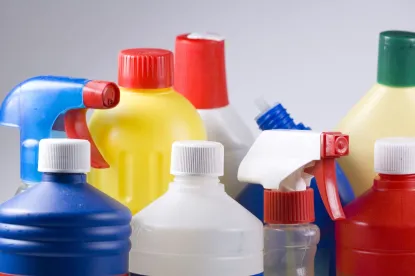On January 27, 2023, plaintiffs in the Southern District of New York announced their displeasure with the inconvenient fact that Tom’s Wicked Fresh! mouthwash contains measurable concentrations of PFAS. They channeled their displeasure by bringing a class action suit against Colgate-Palmolive Company and Tom’s of Maine, Inc. for fraud and unjust enrichment based on several state consumer protection laws, the federal Magnuson-Moss Warranty Act, and common law tort. Plaintiffs assert that “natural” Tom’s Wicked Fresh! mouthwash is anything but natural, in that it contains per- and polyfluoroalkyl substances or “PFAS,” a category of synthetic chemicals are not natural.
Plaintiffs claim that Tom’s Wicked Fresh! mouthwash is a much-touted “natural” product and that its marketers have unjustly financially gained through deceptive and fraudulent marketing practices by leading consumers to believe that their product is natural when it actually contains hazardous substances. PFAS are not included in the product’s list of nine ingredients. That an amazing range of incidental contaminants (which PFAS could well be considered) end up in food and drug products that the U.S. Food and Drug Administration (FDA) expressly excludes from ingredient disclosure, including whole insects, rodent hairs, insect fragments, and rodent dung, is apparently beside the point because, presumably, it is natural. The Center for Disease Control and Prevention (CDC) states that PFAS is dangerous because these substances do not break down and linger stubbornly in the environment, they can travel through soil and groundwater, and they build up (bioaccumulate) in fish, wildlife, and humans.
Plaintiffs went looking for PFAS when they sent a mouthwash sample out for independent testing. Given their ubiquity, PFAS unsurprisingly were detected. Perfluorooctanoic acid (PFOA), a particularly potent variant and standard bearer of the PFAS class of toxic substances, was detected. The U.S. Environmental Protection Agency’s (EPA) recommended lifetime health advisory level for PFOA is 0.004 parts per trillion; the tested sample revealed that “the Product contains PFOA in amounts more than 100 times the EPA’s recommended levels [emphasis in original].”
To establish fraud, plaintiffs must prove defendants intentionally added PFAS to its product or that the defendants knew PFAS were in their product and failed to take corrective measures to remove it. There are at least two possible PFAS contamination sources. The first is if Tom’s used a fluorinated container to transfer the mouthwash before it was bottled. PFAS is known to migrate from fluorinated containers because of the fluorination process. The second possibility is through secondary contamination from plant process water used to make the mouthwash. Additional testing is needed to identify the source. Arguably, in either case, Tom’s did not engage in fraudulent business practices. It may well not have known PFAS contaminated its product because either migration pathway is speculative or completely unexpected. Given their ubiquity, every geographic area of the world and most things in it are contaminated with PFAS, including everyone reading this blog.
Why does this matter? One very real outcome of the case, win or lose, is the end of “natural” product claims. Can beef be “natural” if the cow that it came from is PFAS-contaminated? What about that fresh, “natural” spring water we all love -- does it contain PFAS? Probably, but does that make it not “natural”? We will leave for another blog whether a win for the plaintiffs punishes wrongly businesses that are victims of PFAS manufacturers and others whose PFAS products are now the source of seemingly endless contamination, litigation, and regulation.
Alternatively, if defendants reasonably believed, or should have known, that there were detectable PFAS in their supply chains and failed to act to remove them, then the claims may stick. Fluorinated containers are associated with PFAS contamination. If the defendants use such container technology, query whether they exercised due care in failing to use other technologies. If the contamination was from plant process water, they could and perhaps should have tested the intake water and filtered the PFAS out to ensure product purity.
A jury will decide. Even before it does, though, “natural” product claims may be a thing of the past. Businesses can be expected to be understandably nervous about passing the PFAS purity test.
L. Claire Hansen, legal intern, authored this article.


 />i
/>i

